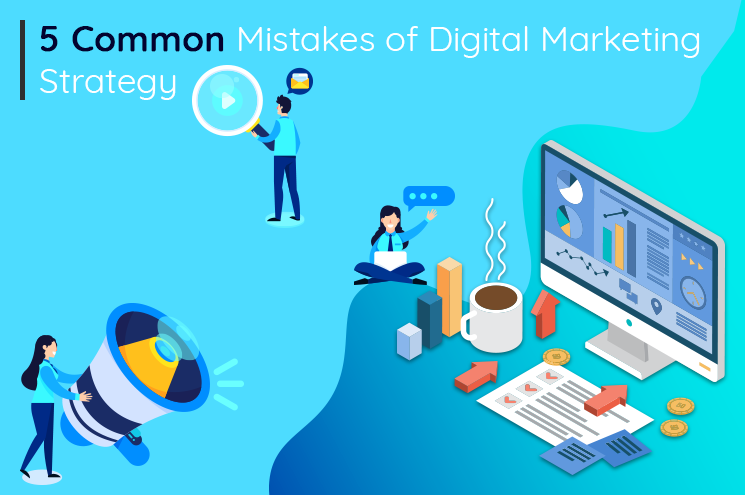
Digital advertising offers powerful tools and opportunities for reaching target audiences, but it also comes with its own set of challenges. To maximize the effectiveness of your ad campaigns and achieve better results, it’s crucial to avoid common mistakes that can hinder performance. This blog post outlines key pitfalls to watch out for and provides strategies for optimizing your digital advertising efforts.
1. Neglecting Clear Objectives
1.1 Define Specific Goals
One of the most common mistakes in digital advertising is failing to set clear, specific goals. Whether your objective is to increase brand awareness, drive traffic, or boost conversions, defining precise goals is essential for guiding your ad strategy and measuring success.
1.2 Align Goals with Metrics
Ensure that your goals are aligned with relevant key performance indicators (KPIs). For instance, if your goal is to generate leads, focus on metrics such as cost per lead (CPL) and conversion rate. Aligning your goals with appropriate metrics helps in evaluating the effectiveness of your campaigns.
2. Ignoring Target Audience Research

How to Avoid Common Mistakes in Digital Advertising
2.1 Conduct Thorough Audience Research
Effective targeting starts with understanding your audience. Common mistakes include targeting too broadly or failing to research audience preferences and behaviors. Conduct thorough audience research to create detailed buyer personas and tailor your ads to meet their specific needs and interests.
2.2 Use Data for Targeting
Leverage data analytics to refine your targeting strategy. Use insights from past campaigns, website analytics, and social media data to identify trends and preferences. This helps in creating more accurate audience segments and improving ad relevance.
3. Overlooking Ad Testing and Optimization
3.1 Implement A/B Testing
Not testing different ad variations can result in missed opportunities for improvement. Implement A/B testing to compare different headlines, visuals, calls-to-action, and other elements. This allows you to identify what works best and make data-driven adjustments to optimize ad performance.
3.2 Continuously Optimize
Digital advertising is not a one-time effort. Continuously monitor and analyze campaign performance to identify areas for improvement. Regularly update and refine your ads based on performance data and changing trends to maintain effectiveness.
4. Neglecting Mobile Optimization
4.1 Ensure Mobile-Friendly Ads
With the increasing use of mobile devices, neglecting mobile optimization is a significant oversight. Ensure that your ads are designed to be mobile-friendly, with responsive design and fast loading times. This improves user experience and increases the likelihood of engagement.
4.2 Test Across Devices
Test your ads across various devices and screen sizes to ensure they display correctly and deliver a consistent user experience. This helps in identifying and resolving issues that may affect ad performance on different platforms.
5. Failing to Set a Realistic Budget
5.1 Allocate Budget Based on Goals
Setting an unrealistic budget or failing to allocate resources effectively can lead to suboptimal results. Allocate your budget based on your campaign goals and expected ROI. Monitor spending and adjust as needed to ensure you’re getting the best value from your advertising investments.
5.2 Track Spending and ROI
Regularly track your ad spend and ROI to ensure you’re staying within budget and achieving desired outcomes. Use analytics tools to monitor performance and make data-driven decisions about budget adjustments.
6. Ignoring Ad Placement and Timing
6.1 Choose the Right Platforms
Choosing the wrong advertising platforms or neglecting to consider placement options can impact campaign success. Select platforms that align with your target audience and campaign objectives. Consider factors such as platform reach, ad formats, and audience engagement.
6.2 Optimize Ad Timing
Timing plays a crucial role in ad performance. Avoid running ads during off-peak hours or when your target audience is less active. Optimize ad timing based on audience behavior and peak engagement periods to maximize visibility and impact.
7. Neglecting Compliance and Best Practices
7.1 Adhere to Advertising Guidelines
Failure to adhere to advertising guidelines and regulations can result in ad rejection or penalties. Ensure that your ads comply with platform policies, industry regulations, and best practices. This includes avoiding misleading claims, respecting intellectual property rights, and maintaining ethical standards.
7.2 Stay Informed About Updates
Keep up-to-date with changes in advertising policies and industry trends. Staying informed helps you adapt to new regulations and best practices, ensuring that your ads remain compliant and effective.
8. Ignoring Analytics and Reporting
8.1 Monitor Performance Metrics
Regularly review analytics and reporting to track ad performance and identify areas for improvement. Metrics such as CTR, conversion rate, and CPC provide valuable insights into how your ads are performing and where adjustments may be needed.
8.2 Use Insights for Strategy Refinement
Leverage performance insights to refine your advertising strategy. Identify successful elements and areas for improvement, and apply these insights to future campaigns to enhance effectiveness and achieve better results.
Conclusion
Avoiding common mistakes in digital advertising is crucial for optimizing ad performance and achieving your marketing objectives. By defining clear goals, conducting thorough audience research, implementing A/B testing, ensuring mobile optimization, setting a realistic budget, and adhering to best practices, you can enhance the effectiveness of your advertising campaigns. Continuously monitor and analyze performance to make data-driven decisions and drive better results in your digital advertising efforts.
